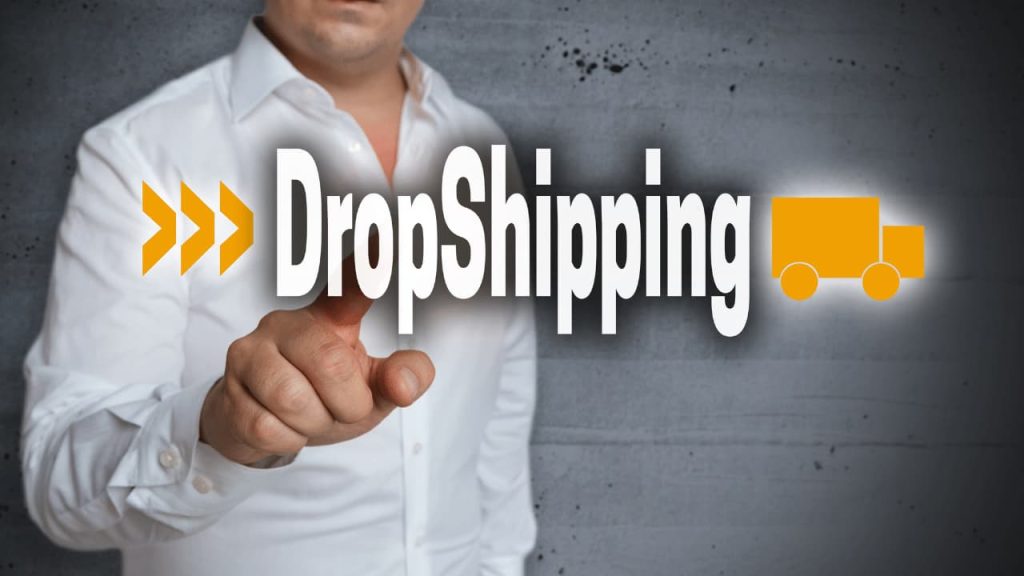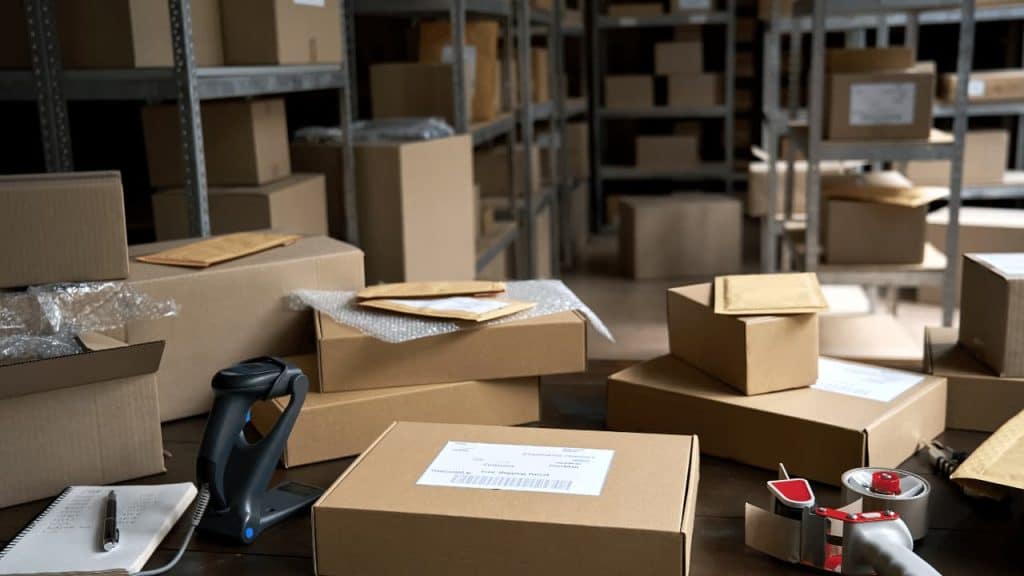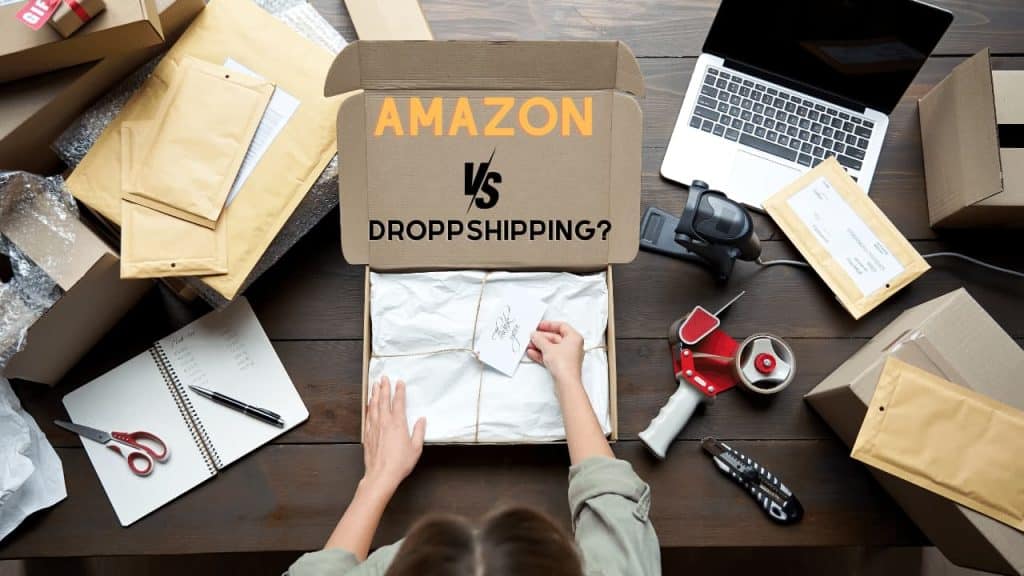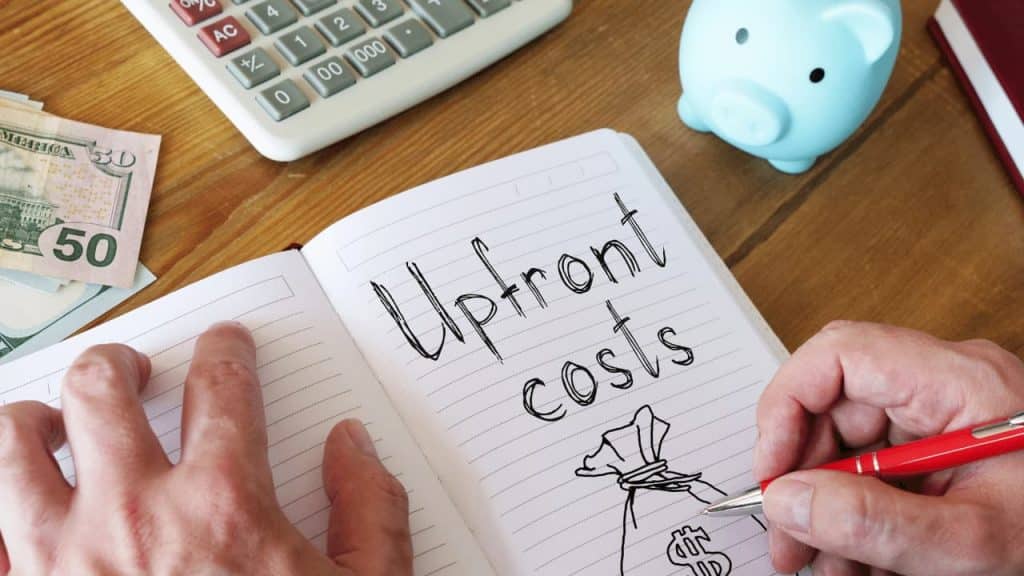Choosing Amazon FBA vs dropshipping can feel like standing at a crossroads, each path leading to a distinct e-commerce destination. Amazon FBA offers a fast track to leveraging one of the world’s largest marketplaces, handling your logistics so you can focus on scaling. Dropshipping, meanwhile, promises a lean start with no stockpile worries, connecting you directly to suppliers. But which route should you take for your online business in 2024?
Our guide peels back the layers of both models, revealing hidden insights and practical tips. Dive in to discover the e-commerce strategy that not only fits your goals but sets you up for unmistakable success.
Understanding Amazon FBA
If you are planning to sell on Amazon, then you might have heard about Amazon FBA. In this section, we will discuss what Amazon FBA is, how it works, and its benefits and challenges.
What Is Amazon FBA?
FBA stands for Fulfillment by Amazon, which is a service provided by Amazon that handles all storage, order fulfillment, returns, and customer service for sellers. In other words, Amazon FBA allows you to store your products in Amazon’s warehouse, and Amazon takes care of the rest.
How Amazon FBA Works
To use Amazon FBA, you need to have a Seller Central account. Once you have a seller central account, you can create a shipment plan and send your products to Amazon’s warehouse. When a customer places an order, Amazon picks, packs, and ships the product to the customer. Amazon also handles returns and customer service related to the order.
Benefits of Amazon FBA
There are several benefits of using Amazon FBA. First, it allows you to take advantage of Amazon’s vast infrastructure and resources. With Amazon FBA, you can store your products in Amazon’s warehouse, which means you don’t have to worry about storage and shipping. Second, Amazon FBA offers fast and reliable shipping options, including Amazon Prime. Third, Amazon FBA provides excellent customer service, which can help you build a good reputation as a seller on Amazon.
Challenges of Amazon FBA
While Amazon FBA offers many benefits, it also has some challenges. First, there are fees associated with using Amazon FBA, including storage fees, fulfillment fees, and other fees. These fees can add up quickly, especially if you have a lot of products. Second, you have to compete with other sellers who are also using Amazon FBA. This means you need to price your products competitively and offer excellent customer service to stand out. Finally, Amazon FBA export can be challenging if you are selling internationally.
In summary, Amazon FBA is a service provided by Amazon that handles all storage, order fulfillment, returns, and customer service for sellers. While Amazon FBA offers many benefits, including access to Amazon’s vast infrastructure and resources, it also has some challenges, including fees and competition.
Exploring Dropshipping
What Is Dropshipping?
Dropshipping allows sellers to offer products online by directly shipping from the supplier or manufacturer, eliminating the need for upfront inventory purchases. This business model is widely embraced by sellers on platforms like Amazon, eBay, and Shopify due to its simplicity and low initial investment. It provides an accessible entry point into e-commerce, enabling entrepreneurs to launch their businesses swiftly and with minimal financial barriers.
How Dropshipping Works?

When you receive an order from a customer, you forward the order to your supplier who then ships the product directly to your customer. You pay the supplier the wholesale price for the product, and you keep the difference between the wholesale price and the retail price as your profit.
Dropshipping can be done through various platforms such as Shopify, WooCommerce, or even your own website. You can also choose to fulfill orders yourself (fulfilled by merchant or FBM) or use a third-party fulfillment service.
Advantages of Dropshipping
One of the biggest advantages of dropshipping is that you don’t have to worry about managing inventory or shipping products. This means that you can focus on other aspects of your business such as marketing and customer service.
Another advantage of dropshipping is that you don’t have to invest a lot of money upfront. Since you don’t have to hold any inventory, you don’t have to worry about the cost of purchasing and storing products.
Limitations of Dropshipping
One of the limitations of dropshipping is that you have less control over the quality of the products you sell. Since you don’t hold the inventory, you can’t inspect the products before they are shipped to your customers. This means that you have to rely on your supplier to provide high-quality products.
Another limitation of dropshipping is that you have slower delivery times compared to other fulfillment methods such as Fulfilled by Amazon (FBA). Since the products are shipped directly from the supplier to your customer, the shipping times can be longer.
In conclusion, dropshipping can be a great way to start an e-commerce business without investing a lot of money upfront. However, it is important to consider the limitations of dropshipping before deciding if it is the right fulfillment method for your business.
Comparing Business Models

When it comes to choosing a business model between Amazon FBA vs dropshipping, there are several factors to consider. Here, we will compare the two business models in terms of inventory management, cost and investment, risk assessment, and profit margins and profitability.
Inventory Management
With Amazon FBA, you send your inventory to Amazon’s fulfillment centers, and they handle the storage, shipping, and customer service. This means you have less control over your inventory, but it also means you don’t have to worry about packing and shipping orders yourself. On the other hand, with dropshipping, you do not hold any inventory. You only purchase the products from your supplier once you have received an order from your customer.
Tune into the latest episode of Seller Session’s Podcast:
How To Slash Your Amazon FBA Storage Fees
Cost and Investment
Amazon FBA requires more upfront investment since you have to purchase inventory in bulk and pay for storage and shipping fees. However, it also means you have more control over your inventory and can take advantage of Amazon’s customer base and infrastructure. Dropshipping, on the other hand, requires less upfront investment since you don’t have to purchase inventory in advance. However, you may have to pay higher prices for individual products, and you may have less control over the quality of the products.
Risk Assessment
With Amazon FBA, you have more control over your inventory, but you also have more risk since you have to purchase inventory in advance. If your products do not sell, you may be left with unsold inventory. With dropshipping, you have less risk since you only purchase products once you have received an order from your customer. However, you also have less control over the quality of the products and the shipping times.
Profit Margins and Profitability

Amazon FBA can offer higher profit margins since you can purchase inventory in bulk and take advantage of Amazon’s customer base and infrastructure. However, it also requires more upfront investment. Dropshipping can offer lower profit margins since you have to pay higher prices for individual products, but it also requires less upfront investment. Ultimately, the profitability of either business model depends on your niche, marketing strategy, and execution.
Overall, both business models have their advantages and disadvantages, and the best choice depends on your specific goals and circumstances.
Amazon FBA vs Dropshipping: Know their Differences
At first glance, Amazon FBA and dropshipping might seem quite alike, both offering a hands-off approach to order fulfillment through a third party. However, the key distinction lies in inventory ownership. With Amazon FBA, you buy your inventory upfront and entrust Amazon to manage your orders, ideal for those dealing with private label products. You purchase in bulk and send your items to an Amazon fulfillment center.

In contrast, dropshipping allows you to sell products without owning them first. You only buy from your supplier after a customer places an order with you, who then ships directly to your customer. This means no initial inventory costs.
Customer service is another area where these models differ. Amazon FBA takes the reins on customer service and returns, easing the seller’s burden. On the flip side, if you’re dropshipping, especially using Amazon’s FBM (Fulfillment by Merchant), you’re in charge of returns and customer interactions, with no option to redirect returns to suppliers or manufacturers.
Managing Inventory
One of the key differences between Amazon FBA and dropshipping is inventory management. With Amazon FBA, you’re responsible for sourcing and buying inventory upfront. You’ll need to make sure you have enough inventory to meet demand, but you don’t have to worry about storing or shipping the products yourself. With dropshipping, you don’t need to worry about buying inventory upfront. You only purchase the product from the supplier when a customer places an order.
Read more about: Amazon Lost Inventory: What to Do When it Happens
Upfront Costs

Another significant difference between Amazon FBA and dropshipping is the upfront costs. With Amazon FBA, you’ll need to invest in inventory upfront, which can be expensive. With dropshipping, there are no upfront costs for inventory, but you’ll need to invest in marketing and advertising to drive traffic to your store.
Control Over Inventory
With Amazon FBA, you have more control over the quality of your products since you’re responsible for sourcing and buying inventory upfront. With dropshipping, you have less control over the quality of your products since you’re relying on a third party to handle the inventory and shipping.
Shipping and Delivery Times
Amazon FBA offers faster shipping and delivery times since Amazon has a vast network of warehouses and shipping carriers. With dropshipping, shipping times can be slower since the product has to be shipped from the supplier to the customer.
In conclusion, Amazon FBA and dropshipping are two popular eCommerce business models with their own unique advantages and disadvantages. Understanding the differences between the two can help you make an informed decision about which one is right for your business.
Conclusion
When it comes to choosing between Amazon FBA and dropshipping, it ultimately comes down to your personal preference and business goals.
If you value trust and convenience, Amazon FBA might be the better choice for you. With FBA, Amazon handles all fulfillment and customer service. This means that customers are more likely to trust your brand since they know they can rely on Amazon’s reputation for quality service. Additionally, your listings will get the Prime Shipping badge, which can increase your chances of making a sale.
However, if you value customer contact and the ability to customize your store, dropshipping might be the better choice. With dropshipping, you have more control over your store’s branding and can create a more personalized experience for your customers. You also have direct contact with your customers, which can help you build relationships and improve your brand’s reputation.
In terms of investment, dropshipping requires less upfront investment since you don’t need to purchase inventory upfront. However, with Amazon FBA, you have the advantage of leveraging Amazon’s vast customer base and the ability to scale your business quickly.
Amazon FBA vs dropshipping, both can be time-saving, but in different ways. With Amazon FBA, you save time on product packaging and shipping. With dropshipping, you save time on product manufacturing and can focus on marketing and customer service.
Overall, both Amazon FBA vs dropshipping have their pros and cons. It’s up to you to weigh the advantages and disadvantages and choose the model that best fits your business goals and preferences.
Frequently Asked Questions
Which one is best for Amazon FBA or dropshipping?
Deciding between Amazon FBA and dropshipping depends on your business goals and preferences. If you want to have more control over the quality of your products and faster delivery times, Amazon FBA might be the better option. However, if you’re looking for lower upfront costs and more flexibility in terms of the products you sell, dropshipping might be the way to go.
Is Amazon FBA worth it as a beginner?
Yes, Amazon FBA can be a great option for beginners. It allows you to take advantage of Amazon’s massive customer base and their world-class fulfillment network. However, it’s important to do your research and understand the costs associated with Amazon FBA, such as storage fees and shipping costs.
Is it worth to dropship on Amazon?
Dropshipping on Amazon can be a profitable business model, but it’s important to understand the risks and challenges associated with it. One of the biggest challenges is maintaining control over the quality of your products and ensuring that your suppliers are reliable. Additionally, Amazon has strict policies regarding dropshipping, so it’s important to familiarize yourself with these policies before getting started.
Can anyone be successful with Amazon FBA?
Anyone can be successful with Amazon FBA, but it takes hard work, dedication, and a solid understanding of the platform. Success on Amazon FBA requires you to identify profitable products, optimize your listings, and manage your inventory effectively. Additionally, you need to stay up-to-date with Amazon’s policies and algorithms to ensure that your products remain visible and competitive.
Can I start Amazon FBA for free?
No, starting Amazon FBA requires some investment. You’ll need to purchase inventory, pay for shipping, and cover other expenses such as storage fees and Amazon’s referral fees. However, the costs associated with Amazon FBA can be lower than those associated with traditional retail, and the potential for profit is much higher.
